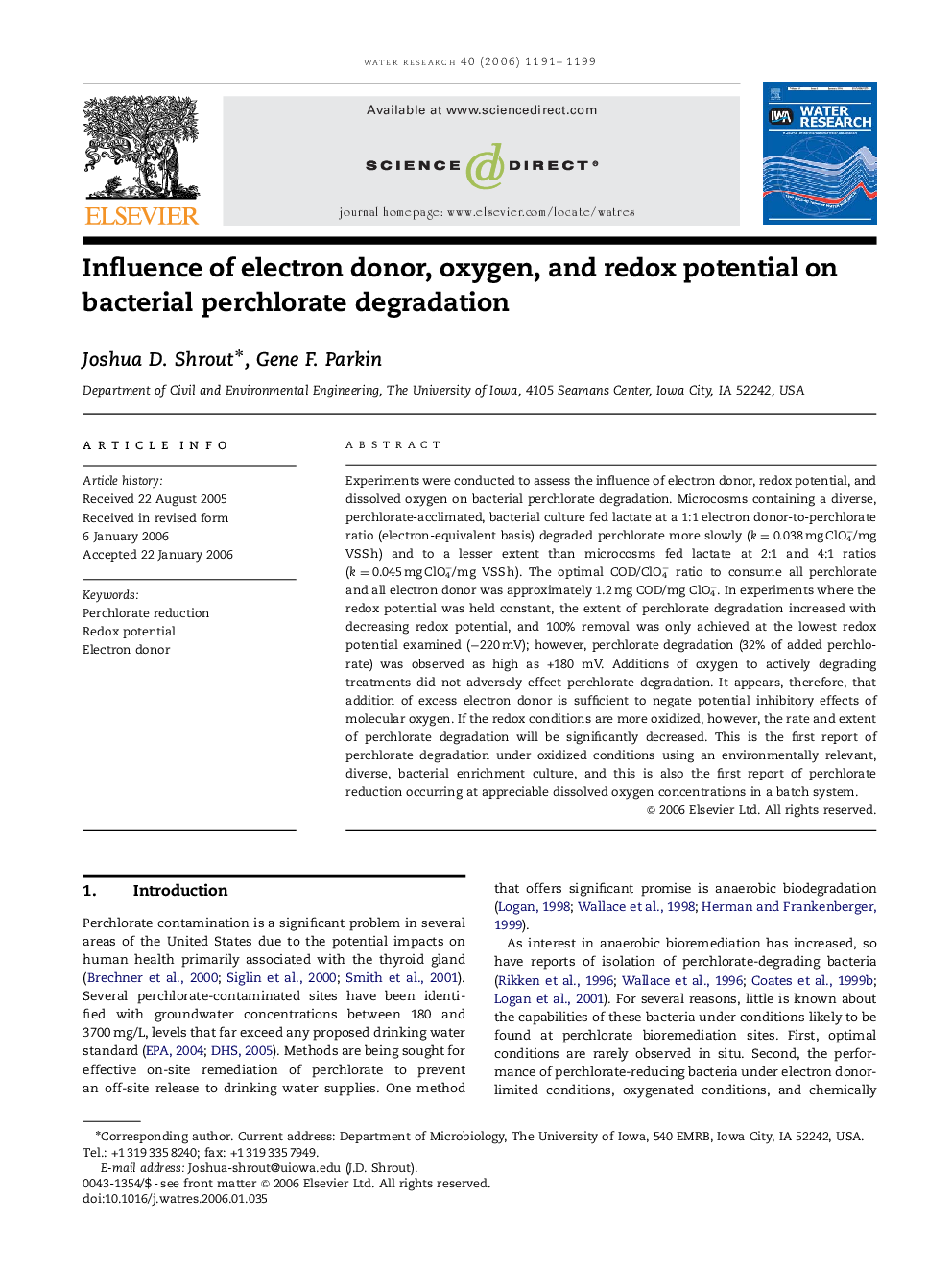| کد مقاله | کد نشریه | سال انتشار | مقاله انگلیسی | نسخه تمام متن |
|---|---|---|---|---|
| 4486592 | 1316994 | 2006 | 9 صفحه PDF | دانلود رایگان |

Experiments were conducted to assess the influence of electron donor, redox potential, and dissolved oxygen on bacterial perchlorate degradation. Microcosms containing a diverse, perchlorate-acclimated, bacterial culture fed lactate at a 1:1 electron donor-to-perchlorate ratio (electron-equivalent basis) degraded perchlorate more slowly (k=0.038 mg ClO4−/mg VSS h) and to a lesser extent than microcosms fed lactate at 2:1 and 4:1 ratios (k=0.045 mg ClO4−/mg VSS h). The optimal COD/ClO4− ratio to consume all perchlorate and all electron donor was approximately 1.2 mg COD/mg ClO4−. In experiments where the redox potential was held constant, the extent of perchlorate degradation increased with decreasing redox potential, and 100% removal was only achieved at the lowest redox potential examined (−220 mV); however, perchlorate degradation (32% of added perchlorate) was observed as high as +180 mV. Additions of oxygen to actively degrading treatments did not adversely effect perchlorate degradation. It appears, therefore, that addition of excess electron donor is sufficient to negate potential inhibitory effects of molecular oxygen. If the redox conditions are more oxidized, however, the rate and extent of perchlorate degradation will be significantly decreased. This is the first report of perchlorate degradation under oxidized conditions using an environmentally relevant, diverse, bacterial enrichment culture, and this is also the first report of perchlorate reduction occurring at appreciable dissolved oxygen concentrations in a batch system.
Journal: Water Research - Volume 40, Issue 6, March 2006, Pages 1191–1199